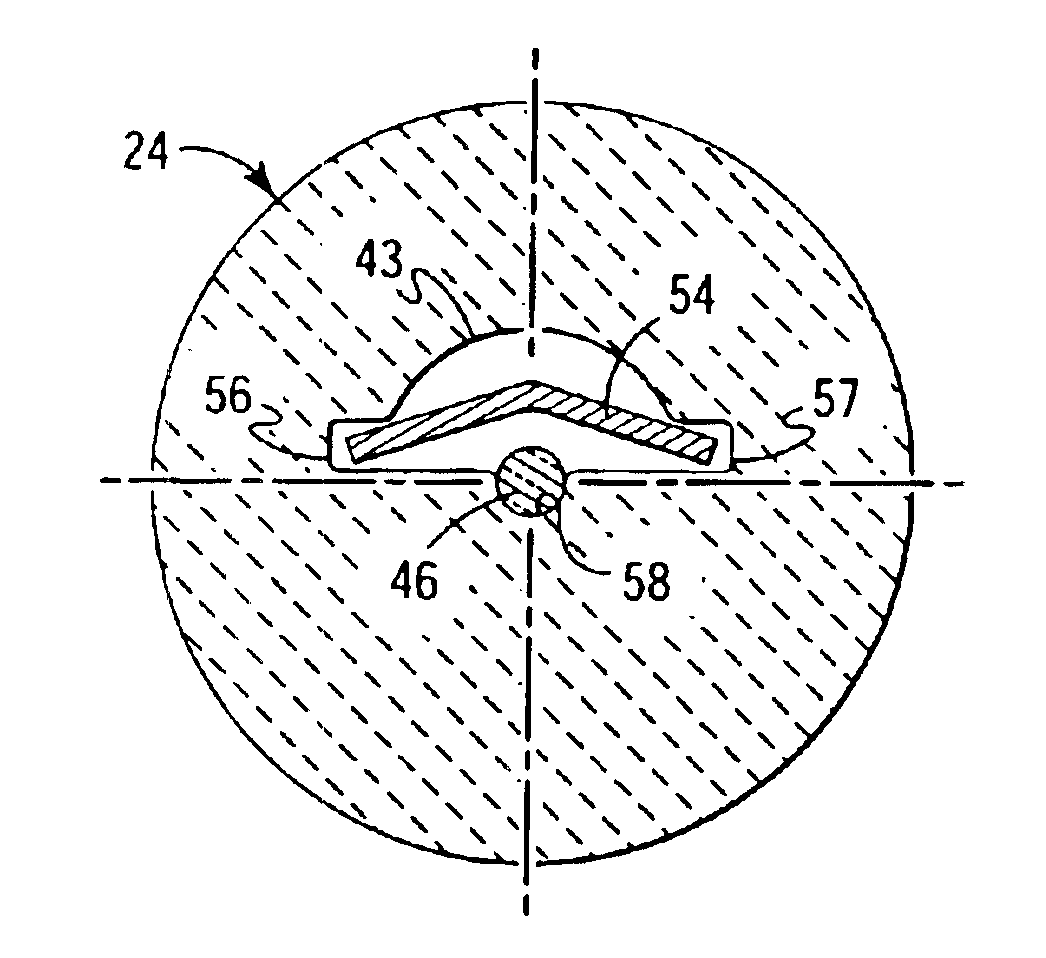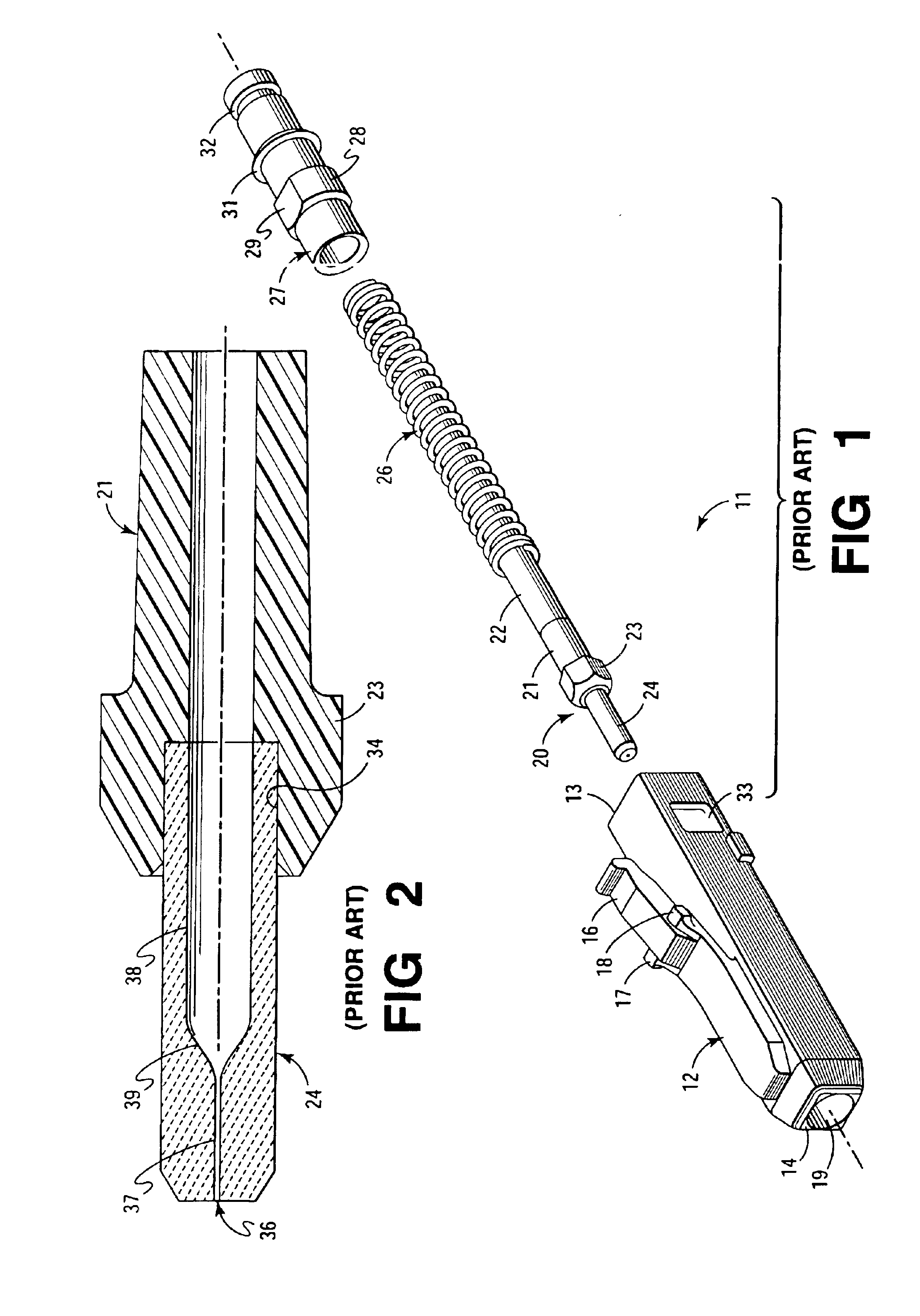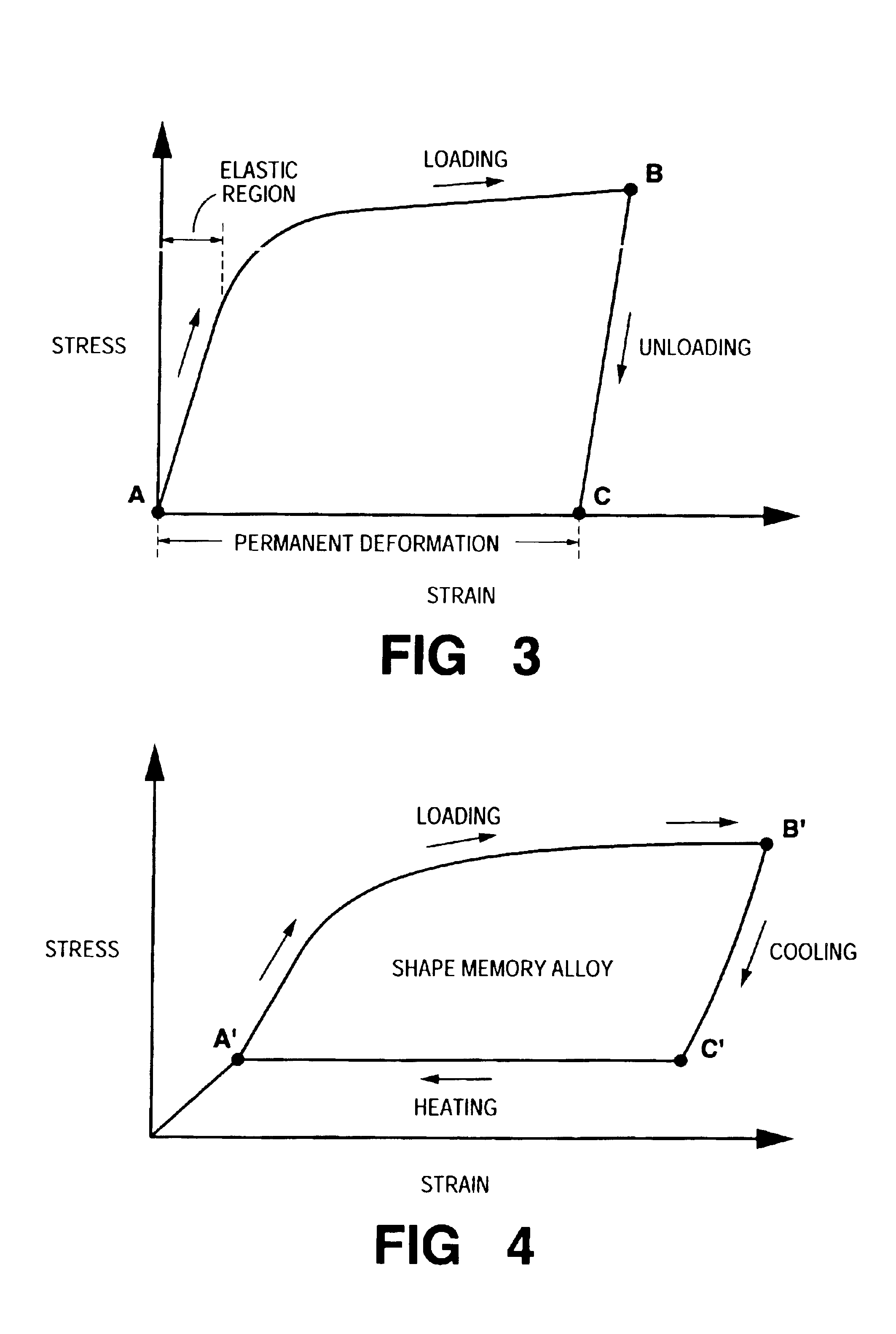Optical fiber connection utilizing fiber containing ferrules
a technology of optical fiber and ferrules, which is applied in the field of optical fiber connectors, can solve the problems of contaminating the precision outside surface of the ferrule, unsuitable for use in the field, and messy handling of adhesives and cements, and achieves the effect of facilitating the insertion and withdrawal of fibers
- Summary
- Abstract
- Description
- Claims
- Application Information
AI Technical Summary
Benefits of technology
Problems solved by technology
Method used
Image
Examples
Embodiment Construction
[0035]FIG. 1 is an exploded perspective view of a prior art plug connector 11 of the LC type to illustrate the location of the ferrule 24. Although an LC type connector is shown, the invention is applicable to any of a large number of connector types. Connector 11 comprises a housing 12 having a cable entrance end 13 and a ferrule end 14. A latching arm 16 which has first and second latching lugs 17 and 18 extends from housing 12, and functions to latch the plug connector 11 in place. Housing 12 and arm 16 are preferably made of a suitable plastic material which has sufficient resilience to allow the latching arm 16 to be depressed for insertion and to spring back into its latching position.
[0036]Housing 12 has an axial bore 19 extending therethrough which accommodates a ferrule-barrel assembly 20. Assembly 20 comprises a flexible hollow tubular member 22 attached to a metal or hard plastic barrel member 21 with an enlarged flange 23 from which extends a ferrule 24 which may be of a...
PUM
| Property | Measurement | Unit |
|---|---|---|
| mode field diameter | aaaaa | aaaaa |
| mode field diameter | aaaaa | aaaaa |
| width | aaaaa | aaaaa |
Abstract
Description
Claims
Application Information
 Login to View More
Login to View More - R&D
- Intellectual Property
- Life Sciences
- Materials
- Tech Scout
- Unparalleled Data Quality
- Higher Quality Content
- 60% Fewer Hallucinations
Browse by: Latest US Patents, China's latest patents, Technical Efficacy Thesaurus, Application Domain, Technology Topic, Popular Technical Reports.
© 2025 PatSnap. All rights reserved.Legal|Privacy policy|Modern Slavery Act Transparency Statement|Sitemap|About US| Contact US: help@patsnap.com



